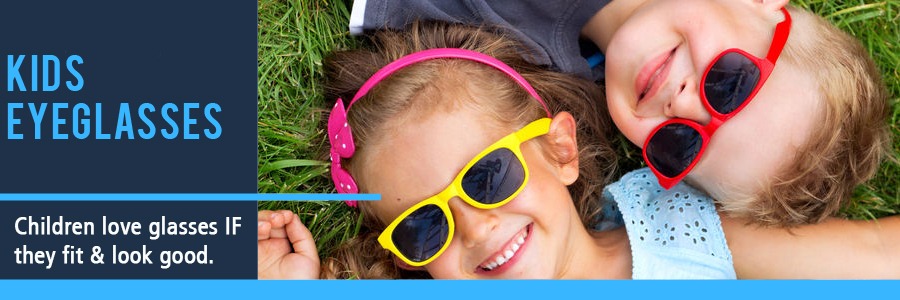
Personalized Eyewear Consultation by Appointment Only (215) 443-7706
- Home
- About
- Products
- Services
- Lens Lab
- Vision Care
- Newsletter
- Contact Us
Menu- Home
- About
- » Doug Wohl
- » Awards
- » Reviews
- Products
- » Bifocals
- » Computer Glasses
- » » Computer Vision Syndrome - Digital Eye Strain
- » Contact Lenses
- » » Are Contacts Right For You
- » » Guidelines for Contacts Wear and Care
- » » Instructions for Soft Contacts
- » Eyeglass Frames
- » » Frame Guide - Frame Shape and Face Shape
- » » Frame Materials
- » » Eyewear Maintenance
- » » Makeup Tips When Wearing Glasses
- » » Wiley X Eyewear Frames
- » Children Eyeglasses
- » » Eyewear for Babies and Young Children 0-5 Years Old
- » » Kids Corner
- » » 10 Tips for Buying Glasses for Children
- » Occupational Eyeglasses
- » Prescription Lenses
- » » Lens Coatings and Tints
- » » » Anti Reflective Coating
- » » Replacement Lens Options
- » Progressives
- » Readers
- » Safety Glasses
- » » Eye Injuries that Could be Prevented with Safety Glasses
- » » Prescription Safety Eye Glass Feature Guide
- » Single Vision Eyeglasses
- » Sports Eyewear
- » Sunglasses
- » » UV Eye Safety
- Services
- » Eye and Vision Exam
- » » Eye and Vision Problems
- » » Glaucoma Test
- » » Vision Refraction
- » Contact Lens Exam and Fitting
- » Eyeglass Repair
- Lens Lab
- Vision Care
- » Cornea
- » Detached Retina
- » Diabetic Retinopathy
- » Dry Eyes
- » Eye and Vision Conditions
- » Fun Eye Facts
- » Eye Function and Parts Explained
- » FAQ
- » Macular Degeneration
- » Makeup Causing Eye Damage
- » Medication Side Effects to Vision
- » Optic Nerve Damage
- » Optical Terms and Definitions
- » Red Eye
- » Retina Damage
- Newsletter
- » Blue Light Blocker Glasses
- » Buying Glasses Online
- » Covid-19 Safety Practices
- Contact Us
You may think that getting your kids to wear eyeglasses is difficult. It really is not IF they feel comfortable, confident, and stylish in their eyeglasses. They will love eyeglasses if you get the right ones that fit right and look good. A comfortable, correct fit is essential for children’s glasses.
Wohl Optics has introduced a new kid’s line of eyeglass frames for babies 6 month children to age 5 years old.This line of eyeglass frames is custom fit for your child. Frames are fit to your child’s face, rather than your child fitting to the frame.
Did you know that 80% of your child’s learning is done with their eyes? Good vision is required to read, write, and use an iPad or other classroom materials. Without good vision, children will struggle with even the most basic tasks and fall behind.
We know that walking into an optical store can be daunting. You'll see plenty of children's eyeglass frames, but how do you figure out which ones your child is willing to wear and which ones will last longer than your ride home?
Another issue we often hear is that parents are afraid their children will scratch, break, or lose eyewear; we are here to help you make the best choice. This is why it is so important that we talk together in person.
Let's take a look at what is important in getting eyeglasses for your children. Wohl Optics is here to help your family, but take a look at our guide - 10 Tips Buying Glasses for Children
Children under the age of 20 are the most susceptible to the damaging effects of UV light. We highly recommend sunglasses for children of all ages. Talk with us about our new line of eyewear for children age 0-5.
Bridge Fit for each Child's Unique Nose
One of the toughest parts about choosing suitable frames for children is that their noses are not fully developed, so they don't have a bridge to prevent plastic frames from sliding down. Metal frames usually are made with adjustable nose pads, so they fit everyone's bridge.
Most manufacturers recognize this difficulty with plastic frames and make their bridges to fit small noses. Each frame must be evaluated individually to make sure it fits the bridge. If any gaps exist between the bridge of the frame and the bridge of the nose, the weight of the lenses will cause the glasses to slide, no matter how well the frame seems to fit before the lenses are made.
It is important that the glasses stay in place, because kids tend to look right over the tops of the lenses instead of pushing slipping glasses back up where they belong. As your optician, we know whether a frame fits properly.
Temple Style for Kids Glasses
Wrap-around Temples: Temples that wrap all the way around the back of the ear help keep glasses from sliding down or dropping off your child's face completely. Wraparound temples generally are available on metal frames and are especially helpful to keep glasses in place on toddlers.
Babies and Toddlers: Some frames have nose pads and cable temples that wrap snugly around ears to hold eyeglasses in place.
Head Strap: Another option is a strap that goes around the head.
Part Time Eyeglass Use: Eyeglasses with cable temples and/or straps are not a good choice for part-time eyeglass wearers because they are a bit more difficult to put on and take off. For glasses that go on and off frequently, it is better to have regular, or skull temples that go straight back and then curve gently around the back of the ear.
Spring Hinges for Flexibility
Many of Wohl's patients, both adults and children, prefer spring hinges on the frame temple.. These special hinges allow the temples to flex outward, away from the frames, without causing any damage. Although they sometimes cost a bit more, spring hinges can be a worthwhile investment for children's eye wear.
Kids are not always careful when they put on and take off glasses; spring hinges can help prevent the need for frequent adjustments and costly repairs. They also come in handy if the child falls asleep with the glasses on or just has a rough day at play. Spring hinges are strongly recommended for toddlers, who sometimes get carried away playing with their new glasses.
Lens Materials for your Children
Once you and your child agree on frames that you both like, we must then consider lens material:
- Children's lenses should be made of polycarbonate or a material called Trivex because these lightweight materials are significantly more impact-resistant than other lens materials. Not only are they the safest materials, they also are lighter in weight than regular plastic lenses, a nice advantage for strong prescriptions.
- Polycarbonate and Trivex have built-in protection against potentially damaging Ultraviolet (UV) rays, and the lenses are scratch-resistant.
- The price for polycarbonate lenses generally is comparable to the cost for regular plastic lenses with UV and scratch-resistant coatings. Don't forget that with polycarbonate lenses, kids get that extra margin of safety to protect their eyes. Keep in mind that Trivex lenses may cost a little more than polycarbonate.
Kids Sports Eyeglasses
This is when lifestyle comes into consideration. Are your children active in sports or rough in play?
Polycarbonate is such a safe lens material that you may be tempted to let your child play sports in his regular glasses. Here's the drawback: Although polycarbonate is the lens material used for sports eyewear, regular eyeglass frames do not provide enough protection from large objects such as balls and flying elbows. So if your child is involved in sports, a proper sports goggle with polycarbonate lenses will provide the best protection against eye injury. Yes, we carry them for you.
To provide optimum protection, sports goggles must be fitted properly and it really helps to work with an experienced optician before making a purchase. Although it sounds counter-intuitive, a sports goggle should have a larger vertical eye opening, rather than a smaller one. If an impact should occur and the goggles are pushed toward the face, a large eye opening keeps the impact points far above and below the eyes. With a small opening, the goggle hits right at the edge of the eye socket, which can damage the globe of the eye.
About Wohl Optics Vision Care
Proper eyewear prescription AND fit are vital for your best vision. Fit is something that you will never get right with an online optical business. Veteran owned and operated - best in Bucks County Optical eye care shop.
How could your vision be better? What situations do you feel give you trouble when wearing eyeglasses? That is why we are here.
Exclusive Discounts
Military, Veterans, First Responders, Police, Firefighters, Ambulance all receive exclusive discounts (not combined with insurance or other discounts).
We accept most major Vision Insurance Plans.
(215) 443-7706 Phone
(215) 443-8795 FaxWohl Optics
550 Street Rd.
Warminster, PA 18974Veteran Helping Veterans - Local Bucks County, PA Independent Optician

Copyright © 2016-2022
All Rights ReservedCredit Cards Accepted

Private Consultations for your Family: Flexible hours at your convenience by appointment ONLY
Wohl Optics Regular Schedule:
Monday 10:00AM - 5:00PM Tuesday 10:00AM - 4:00PM Wednesday 10:30AM - 6:00PM Thursday 10:30AM - 7:30PM Friday 10:00AM - 6:00PM Saturday 10:00AM - 1:00PM We are offering personal appointments to everyone for the selection of eyeglasses and eyeglass adjustments. We will make every effort to accommodate your schedule. Let us know if you would like to meet at Wohl Optics outside of the above regular scheduled hours.
Service Areas
Bucks County, PA; Montgomery County, PA; Chester County, PA; Philadelphia, PA; Warminster, PA; Ivyland, PA; Warrington, PA;Furlong, PA; Warrington, PA; New Hope, PA; Southampton, PA; Bensalem, PA; Northampton, PA; Hatboro, PA; Willow Grove, PA; Huntingdon Valley, PA; Horsham, PA; Lansdale, PA; Montgomeryville, PA; Newtown, PA; Langhorne, PA; Lahaska, PA; Buckingham, PA; Yardley, PA; Chalfont, PA; Richboro, PA; Doylestown, PA; Glenside, PA; Ambler, PA; Fort Washington, PA; Churchville, PA; Norristown, PA; Washington Crossing, PA; Philadelphia, PA.
Wohl Optics 550 Street Rd. Warminster, PA 18974 (215) 443-7706 Privacy Policy HIPAA Sitemap
